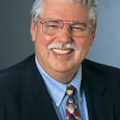To promote economic growth, the US needs to look no further than its closest neighbors, Canada and Mexico. "With rising competitive pressures from overseas and weak growth at home, the quickest external route to economic recovery and enhanced competitiveness is to stretch the US market to include 113 million Mexicans and 34 million Canadians," said Robert A. Pastor, professor and founding director of the Center for North American Studies, American University, in a Council on Foreign Relations report.
North American nations should create "a seamless market" by negotiating a common external tariff, eliminating restrictions on transportation and services, funding continental infrastructure, and "fostering a sense of community among the publics of the three countries that will also enhance the region's influence in negotiations with Asia and Europe," Pastor said, adding, "One estimate suggests benefits to the three countries would exceed $400 billion."
But instead of addressing issues not covered by the 1994 North American Free Trade Agreement, the three countries "reverted to old habits of bilateral, ad hoc negotiations," he said, adding, "Instead of forging a unified competitiveness strategy toward the European Union and East Asia, each government has negotiated on its own."
US President Barack Obama is pushing US trade in Asia and Europe, although "Mexico and Canada are already the US's two largest export markets, its two largest sources of energy imports, and in the case of Mexico, the largest source of immigrants." Moreover, 25-40% of the value of US imports from Canada and Mexico is from components made in the US.
The most rapid US job growth in recent history was in 1993-2001 "with the onset of NAFTA and the end of most trade and investment barriers between the US, Canada, and Mexico," Pastor said. "Trade tripled and foreign direct investment grew fivefold. But 2001 proved to be a turning point for North America just as the outlines of a continental market were becoming visible. Growth in trade has since declined by two-thirds and foreign investment by half."
That was partly because China expanded exports to North America. Also, Pastor said, "Post-9/11 restrictions significantly raised the cost of moving products back and forth across North American borders. There has been little investment in common infrastructure, resulting in long wait times at borders and slower movement of commercial goods. But the main cause was simply the failure of leaders in the three countries to build on NAFTA's foundation and create a seamless market."
Start with oil, gas
A good place to start building a seamless market is oil and natural gas, major factors in the economies of all three countries. Mexico has long been a major exporter of oil to the US, although as its production has declined in recent years so have exports. However, it's a net importer of natural gas primarily from the US, and that demand is growing.
Canada is the primary outside source of oil and gas for the US market. More important, it has more than 70% of total natural bitumen deposits in the world, which will make it a major power in the oil market for decades.
Little wonder members of industry and Congress are urging Obama to implement the Trans-Border Hydrocarbons Agreement (TBHA) with Mexico. The Republican chairman of the Western Hemisphere Subcommittee in the House and the group's ranking Democrat both asked Obama to submit to Congress for approval the TBHA that was reached with Mexico in early 2012. Rep. Albio Sires (D-NJ) said the US needs to improve relations with both Mexico and Canada (OGJ Online, Mar. 14, 2013).
TBHA is designed to enhance North America energy security, resolve claims in the Western Gap of the Gulf of Mexico, and establish a process by which US companies and PEMEX may develop transboundary reservoirs.
About the Author

Sam Fletcher
Senior Writer
I'm third-generation blue-collar oil field worker, born in the great East Texas Field and completed high school in the Permian Basin of West Texas where I spent a couple of summers hustling jugs and loading shot holes on seismic crews. My family was oil field trash back when it was an insult instead of a brag on a bumper sticker. I enlisted in the US Army in 1961-1964 looking for a way out of a life of stoop-labor in the oil patch. I didn't succeed then, but a few years later when they passed a new GI Bill for Vietnam veterans, they backdated it to cover my period of enlistment and finally gave me the means to attend college. I'd wanted a career in journalism since my junior year in high school when I was editor of the school newspaper. I financed my college education with the GI bill, parttime work, and a few scholarships and earned a bachelor's degree and later a master's degree in mass communication at Texas Tech University. I worked some years on Texas daily newspapers and even taught journalism a couple of semesters at a junior college in San Antonio before joining the metropolitan Houston Post in 1973. In 1977 I became the energy reporter for the paper, primarily because I was the only writer who'd ever broke a sweat in sight of an oil rig. I covered the oil patch through its biggest boom in the 1970s, its worst depression in the 1980s, and its subsequent rise from the ashes as the industry reinvented itself yet again. When the Post folded in 1995, I made the switch to oil industry publications. At the start of the new century, I joined the Oil & Gas Journal, long the "Bible" of the oil industry. I've been writing about the oil and gas industry's successes and setbacks for a long time, and I've loved every minute of it.